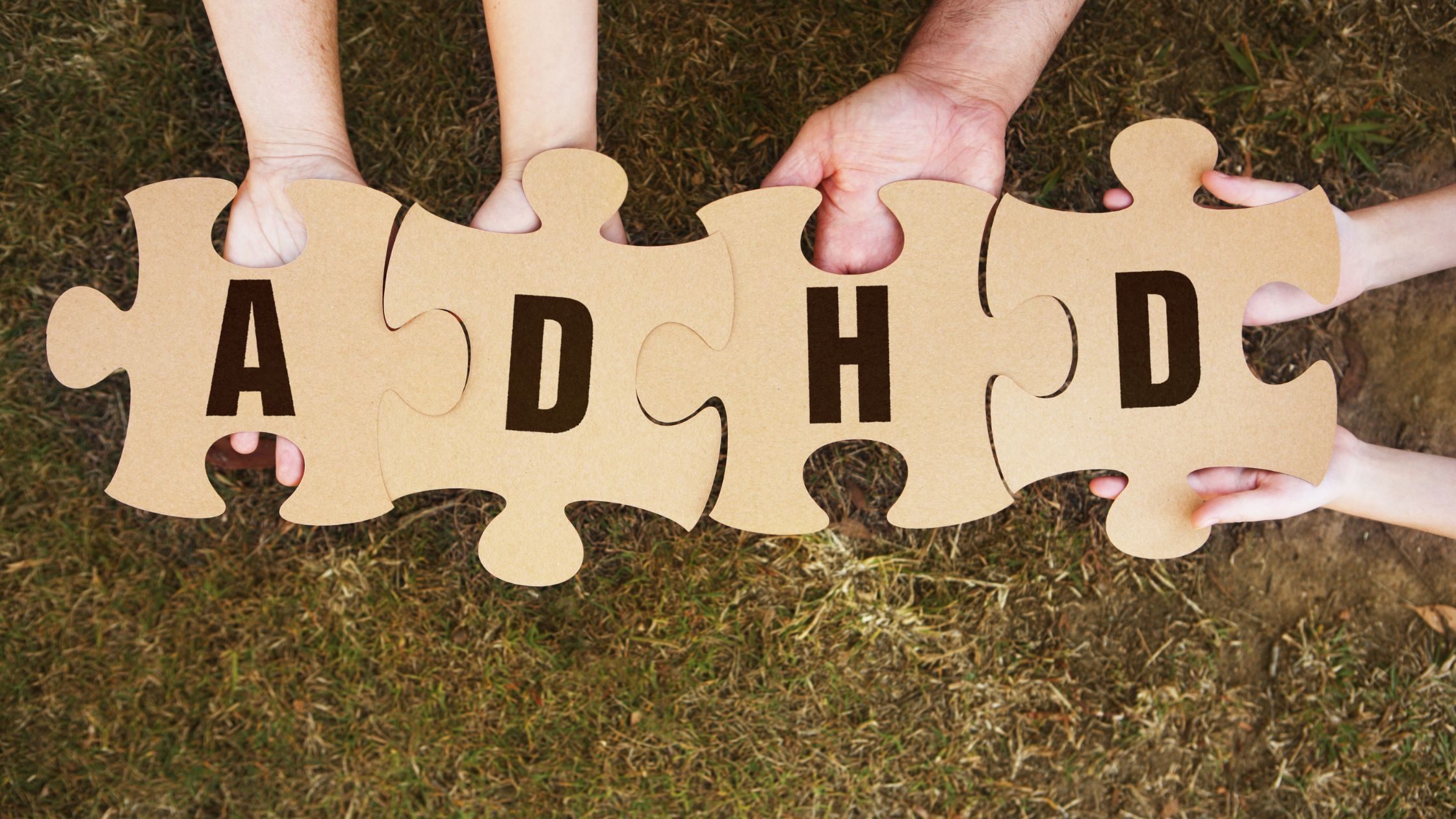Picture this: your child has difficulty staying on task, can’t sit still, and their mind is constantly wandering. It could be autism. It could be ADHD. It could be both. But what’s the difference between ADHD vs Autism? That’s a valid, understandable question to ask, and the answer is complex. ADHD vs Autism isn’t a black-and-white, “either-or” for most children. They can overlap, co-occur, and be misdiagnosed, especially in girls.
Both ADHD and autism are neurodevelopmental disorders that emerge in childhood. Both affect learning, emotions, and behavior. But their causes, diagnostic criteria, and treatment approaches differ in meaningful ways.
Let’s break down a comprehensive comparison of ADHD vs Autism. We’ll cover similarities, differences, gender-specific risks, and practical strategies for families.
ADHD vs Autism at a Glance: What Parents Should Know
- ADHD prevalence: About 11.4% of U.S. children ages 3–17 (around 7 million) have been diagnosed.
- Autism prevalence: About 1 in 31 children (3.2%) aged 8 years are diagnosed.
- Gender differences: Boys are nearly twice as likely to be diagnosed with ADHD and 3–4 times more likely to be diagnosed with autism than girls.
- Co-occurrence: Up to half of children with autism also meet ADHD criteria, making dual diagnoses common.
- Treatment approaches: ADHD often responds to medication and behavior therapy. Autism care focuses on social, behavioral, and communication interventions.
What does ADHD vs Autism mean in children?
ADHD is defined by inattention, hyperactivity, and impulsivity. Autism is defined by difficulties with social communication and repetitive behaviors. When parents ask about ADHD vs Autism, they are really asking how to tell the two apart. Both can disrupt learning and relationships, but the roots of those challenges differ. Understanding this distinction is the first step toward getting children the right support.
ADHD vs Autism Overlap: Shared Traits That Confuse Parents
Although they’re distinct conditions, there’s a huge overlap in ADHD vs Autism research. That muddies the waters when it comes to diagnosing both.
Common Features
- Executive function deficits: Both groups struggle with working memory, planning, task switching, and inhibition.
- Social challenges: Children with ADHD may interrupt or miss social cues due to inattention. Children with autism may fail to interpret cues at all. Both lead to peer rejection or difficulty keeping friendships.
- Emotional regulation issues: Outbursts, frustration, or anxiety occur in both conditions, though triggers may differ.
- Sensory sensitivities: While more often linked to autism, many ADHD children also report sensory overload.
- Learning differences: Both increase risks for academic struggles, though mechanisms vary.
Why do ADHD and autism get confused?
ADHD vs Autism overlap in ways that can puzzle both parents and teachers. A child with ADHD may be restless and inattentive, while a child with autism may withdraw socially, yet both can struggle to keep friends. Emotional outbursts and sensory overload can appear in either condition, making it easy to mistake one for the other. That’s why they require comprehensive evaluations that penetrate deeper than the surface.
Key Differences in ADHD vs Autism Symptoms and Behaviors
When comparing ADHD vs Autism, certain differences stand out clearly for parents and clinicians.
What are the main differences in ADHD vs Autism?
ADHD is marked by trouble sustaining attention, impulsivity, and hyperactivity. Autism centers on difficulties with social communication, understanding nonverbal cues, and repetitive patterns of behavior. ADHD symptoms often fluctuate depending on the environment—structured settings may improve them—while autism traits remain consistent across situations. Knowing these differences helps parents seek targeted therapies that address the root challenges.
- Core symptoms
- ADHD: Trouble focusing, sitting still, following instructions.
- Autism: Trouble with reciprocal conversation, interpreting social cues, and repetitive patterns of behavior.
- Context matters
- ADHD symptoms may improve in novel or structured settings.
- Autism traits remain consistent across environments.
- Social difficulties
- ADHD: Impulsivity causes interruptions and missed cues.
- Autism: Difficulty understanding cues in the first place.
- Communication style
- ADHD: Often talkative, but unfocused.
- Autism: May struggle with eye contact, gestures, or back-and-forth dialogue.
- Treatment differences
- ADHD: Stimulant medications plus behavioral therapy.
- Autism: Applied Behavior Analysis (ABA), speech therapy, occupational therapy.
| Aspect | ADHD | Autism (ASD) | Overlap |
| Symptoms | Inattention, impulsivity, hyperactivity | Social communication deficits, restricted/repetitive behaviors | Executive function issues |
| Prevalence (U.S.) | ~11.4% ages 3–17 | 3.2% of 8-year-olds | 30–50% comorbidity |
| Gender ratio | Boys 2x more than girls | Boys 3–4x more than girls | Girls face highest risk of missed diagnoses |
| Comorbidities | Anxiety, depression, learning disabilities | Anxiety, epilepsy, GI issues | Shared: sleep issues, mood dysregulation |
| Treatment | Medication + behavior therapy | ABA + social skills training | Integrated: CBT + school supports |
Girls and ADHD vs Autism: Why Daughters Are Missed or Misdiagnosed
One of the most overlooked aspects of ADHD vs Autism symptoms in girls is how differently they present compared to boys.
Why are girls often misdiagnosed with ADHD or autism?
Girls tend to internalize their symptoms, which makes ADHD vs Autism harder to spot. They tend to seem shy or dreamy, drawing less attention and thus flying under the radar. Autistic girls often camouflage, copying peers and hiding their struggles to fit in. As a result, teachers and doctors may assume the problem is anxiety or depression rather than ADHD or autism. This delay means girls often don’t get support until much later.
ADHD in Girls
- Girls more often show inattentive symptoms like daydreaming or disorganization.
- Teachers may overlook these subtler signs compared to disruptive hyperactivity in boys.
- Girls are frequently mislabeled as “lazy” or “anxious” instead of ADHD.
Autism in Girls
- Camouflaging: Girls learn to mimic peers, suppress stimming, or script conversations.
- Different special interests: Girls may fixate on socially typical topics, making autism harder to detect.
- Misdiagnosis: Many girls are first labeled with anxiety, depression, or eating disorders.
If you’re seeking professional guidance, here’s how to find the best ADHD specialists near you.
What is the impact of missed ADHD vs Autism diagnoses in girls?
Delayed diagnosis can have serious consequences. Girls may struggle in silence, developing low self-esteem or secondary mental health issues. By the time they are properly identified, they might be too far gone in academics, friendships, or even employment. Early, gender-sensitive screening is vital to prevent these long-term difficulties.
Navigating ADHD vs Autism: Strategies That Help Families
When ADHD and autism co-occur, families face even more complex challenges. Managing co-occurring ADHD and Autism treatment requires multidisciplinary support.
How do you treat children with both ADHD and autism?
Co-occurring ADHD and Autism treatment usually combines several strategies. Medication may help with hyperactivity and impulsivity, while behavioral therapies support daily functioning. Social skills training and speech therapy are often added for autism-specific needs. Parents should expect a mix of medical, educational, and therapeutic interventions tailored to their child, rather than a one-size-fits-all plan.
Strategies That Work
- Comprehensive evaluations: Pediatricians, psychologists, and speech/occupational therapists working together.
- Gender-sensitive screening tools: Especially important for detecting subtler symptoms in girls.
- Integrated therapy: Cognitive Behavioral Therapy (CBT) for executive functions, plus social skills training for autism.
- Careful use of medication: Stimulants may improve focus but can worsen anxiety in autistic children. Close monitoring is essential.
- School accommodations: IEPs and 504 plans should target both attention deficits and social communication needs.
For more practical advice on managing symptoms day-to-day, see our guide on how to manage ADHD in kids like a pro.
ADHD vs Autism and Comorbidities: The Extra Challenges Families Face
What other conditions happen alongside ADHD and autism?
Both ADHD and autism are frequently accompanied by other issues. Anxiety and depression are especially common, often making behavior harder to manage. Learning disabilities affect school performance, while medical conditions such as gastrointestinal problems or epilepsy complicate things evern further. For parents, this means care has to look past the ADHD vs Autism comparison and address the whole child.
- Anxiety: Nearly 40% of children with ADHD also have anxiety.
- Depression: Many adolescents with ADHD experience depression. Autistic girls are at even higher risk.
- Learning disorders: Half of children with ADHD have learning disabilities.
- Medical issues in autism: Autistic individuals often report issues like epilepsy and chronic pain.
ADHD vs Autism in Children: Why Early Diagnosis Matters
Why does early ADHD vs Autism diagnosis matter?
Early recognition makes an enormous difference. A diagnosis of either opens doors to school accommodations, therapy, and family support at the critical moment when development is most flexible. Without it, children may fall behind academically, miss chances for social growth, and face higher risks of depression or anxiety. For families, early clarity takes years of confusion and stress out of the equation.
Benefits of Early Identification
- Academic success: Early accommodations prevent falling behind.
- Better social outcomes: Social skills therapy improves friendships and self-esteem.
- Reduced mental health risks: Early diagnosis lowers the risk of untreated anxiety or depression.
- Family well-being: Parents gain clarity, resources, and community support.
What happens if ADHD or autism is diagnosed late?
Children with later diagnoses go without the supports they need for longer, which can cause poor grades and social isolation. Teens may struggle with friendships, mental health, or even substance use as they cope with untreated symptoms. Adults diagnosed late sometimes feel years of frustration and missed opportunities. A late diagnosis is better than nothing, but early intervention produces the best outcomes.
Engaging activities can also make a difference — for example, playing an instrument can boost psychological development.
Key Takeaways for Parents on ADHD vs Autism
- ADHD vs Autism overlap but differ at their core. ADHD centers on inattention and impulsivity, while autism centers on social communication and repetitive patterns.
- ADHD vs Autism symptoms in girls are often overlooked. Internalized behaviors like daydreaming or camouflaging lead to delayed support.
- Co-diagnosis is common. Up to half of autistic children also have ADHD, requiring integrated care.
- Co-occurring ADHD and Autism treatment is complex. Families need holistic approaches that combine behavioral, medical, and school-based interventions.
- Early action is critical. The earlier families identify ADHD vs Autism, the better the academic, emotional, and social outcomes.
Curious about how modern culture and media can shape attention and mental health? Explore our explainer on what is brainrot.
What Parents Should Remember About ADHD vs Autism
ADHD vs Autism is not a matter of choosing one label over the other but understanding their similarities and differences. For many families, especially those raising girls, the challenge lies in overcoming biases that contribute to delayed or missed diagnoses.
The encouraging news is that with early evaluations, tailored therapies, and consistent school and family support, children with ADHD, autism, or both can thrive. Understanding ADHD vs Autism side by side helps parents advocate to get their children the right resources at the right time.
Resources:
Davies C, Moosa M, McKenna K, et al. Quality of Life, Neurosensory Disorders and Co-Occurring Medical Conditions in Individuals on the Spectrum, with a Special Focus on Females Diagnosed with Autism: A Systematic Review. J Clin Med. 2023;12(3):927. Published 2023 Jan 25. doi:10.3390/jcm12030927
Young S, Adamo N, Ásgeirsdóttir BB, et al. Females with ADHD: An expert consensus statement taking a lifespan approach providing guidance for the identification and treatment of attention-deficit/ hyperactivity disorder in girls and women. BMC Psychiatry. 2020;20(1):404. Published 2020 Aug 12. doi:10.1186/s12888-020-02707-9
Center for Disease Control – Data and Statistics on ADHD
Center for Disease Control – Data and Statistics on Autism




